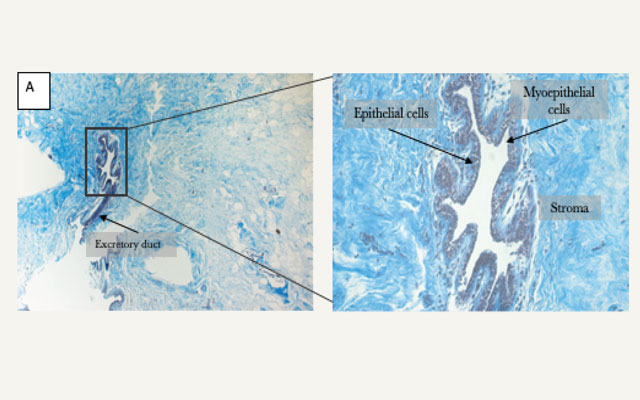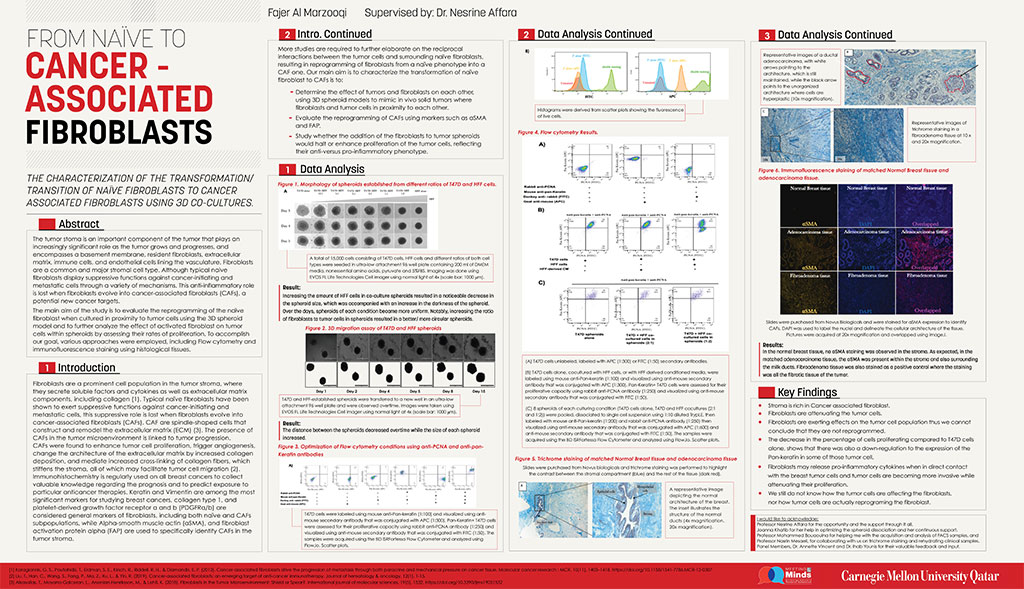The tumor stoma is an important component of the tumor that plays an increasingly significant role as the tumor grows and progresses, and encompasses a basement membrane, resident fibroblasts, extracellular matrix, immune cells, and endothelial cells lining the vasculature. Fibroblasts are a common and major stromal cell type. Although typical naive fibroblasts display suppressive functions against cancer-initiating and metastatic cells through a variety of mechanisms (cell-cell interaction, paracrine signaling by soluble factors, ECM integrity etc.), this anti-inflammatory role is lost when fibroblasts evolve into cancer-associated fibroblasts (CAFs), which have been the subject of many recent studies as well as potential new cancer targets. The main aim of the study is to evaluate the reprogramming of the naïve fibroblast when cultured in proximity to tumor cells using the 3D spheroid model and to further analyze the effect of activated fibroblast on tumor cells within spheroids by assessing their rates of proliferation. To accomplish our goal, various approaches were employed, including Flow cytometry and immunofluorescence staining using histological tissues. By performing a flow cytometry on 2D condition, we saw 2 Pankeratin+ populations which clearly means that fibroblasts are exerting effects on the tumor cell population. This implied that fibroblasts are attenuating the tumor cells.



